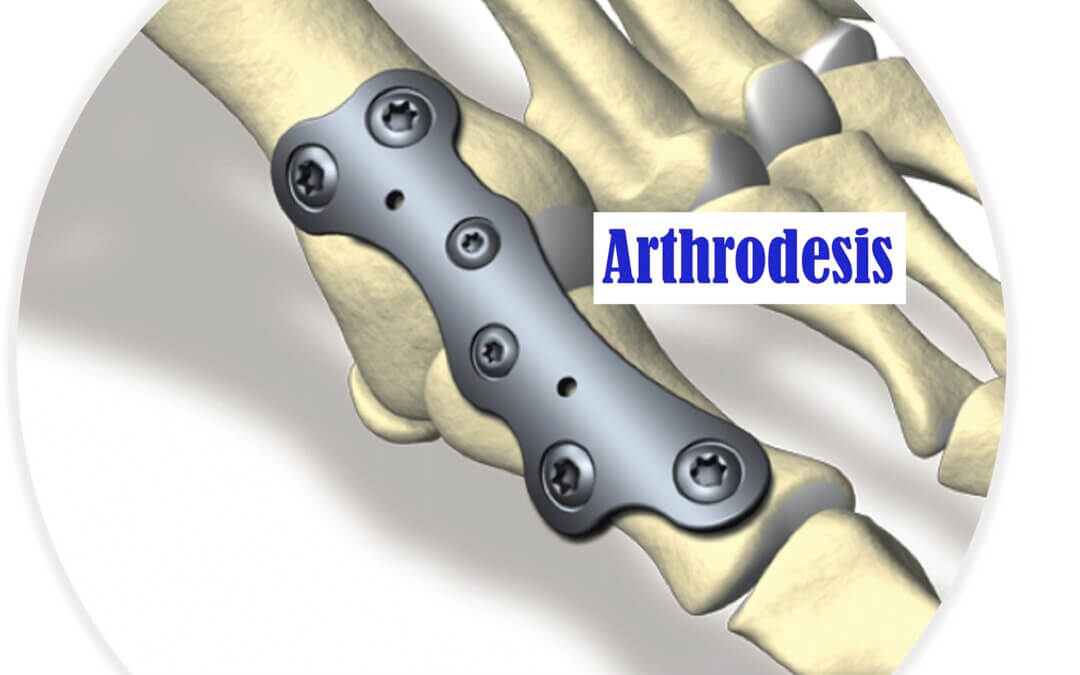Arthrodesis definition & procedure
Arthrodesis is used for the smaller toes of the foot and the first toe. The surgeon will remove bone and damaged cartilage from the joint. Unlike a ‘replacement arthroplasty‘, where an artificial spacer can be incorporated into the space once where the bone has been removed, the arthrodesis creates no space.
All joints are left stiff with a small amount of shortening. The procedure is useful for correcting hammer toes, hallux valgus, and hallux rigidus. On this site, you can read a new series on the stiff toe and arthrodesis revision procedures from July 2021.
Because no movement is created, footwear previously used may have to be discarded and replaced. In lesser toes, an arthrodesis commonly causes the end of the toe to bend because the long tendon overpowers the tip of the toe. Patients can expect to have screws, pins and plates inserted into the bone and joint to allow earlier recovery.
Smaller toe joints
In the lesser toes, procedures often use pins (Kirchner wires) that protrude from the end of the digit, which is protected by a cap. Removal is undertaken in outpatients at 4-6 weeks unless the pin loosens when it may be removed earlier. Arthrodesis seeks to restore a toe after resolving a hammer toe or mallet toe deformity. Pressure from corns can be relieved. Newer techniques can offer internal pegs made from malleable metal and two ends that clip together, avoiding wire. Discussion with the surgeon is important to find the best method.
Arthrodesis can be used for a wider range of procedures in the foot and elsewhere in the body. Arthrodesis is also performed by foot surgeons in the midfoot and hindfoot
Thanks for reading ‘Arthrodesis definition & procedure.’
by David R Tollafield
Published by Busypencilcase Communications Ltd Est 2015

Issued June 2020

Trackbacks/Pingbacks